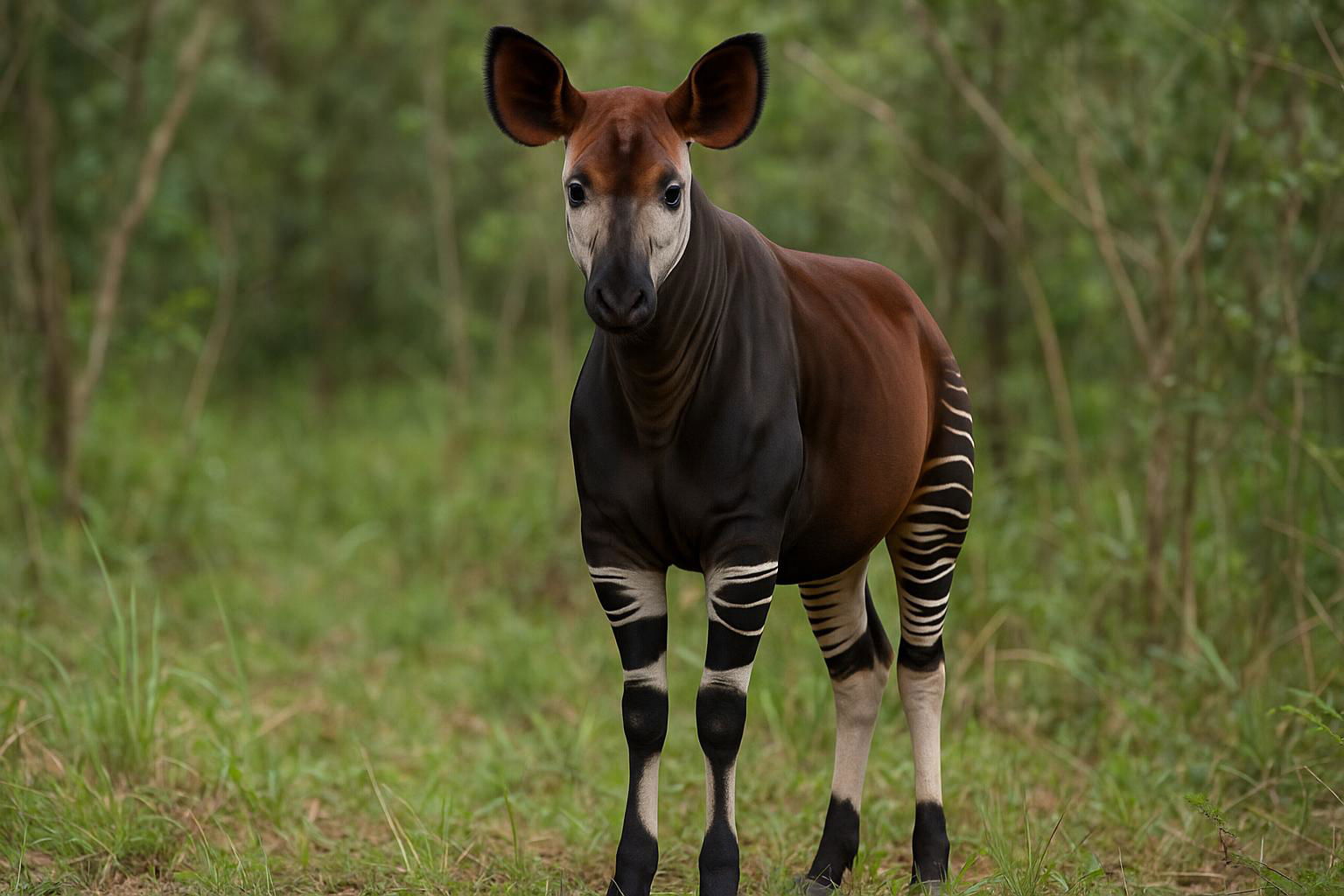
Okapi
Okapia johnstoni
The okapi (Okapia johnstoni) is a unique and elusive mammal native to the dense rainforests of the Democratic Republic of the Congo in Central Africa. It is the closest living relative of the giraffe, and although it shares some similarities, it possesses distinct characteristics that make it instantly recognizable. The okapi has a striking appearance, with a velvety, chocolate-brown coat contrasted by zebra-like white and black stripes on its hindquarters and legs, serving as effective camouflage among the forest’s dappled tree shades.
This solitary and herbivorous animal has a long, prehensile tongue, similar to that of a giraffe, which it uses adeptly to strip leaves, buds, and fruit from trees and shrubs. Adult okapis typically stand about 1.5 meters (5 feet) tall at the shoulder and measure approximately 2.5 meters (about 8 feet) in length, with males being smaller than females. They have large, sensitive ears that enable them to detect the slightest sounds in their habitat, aiding in their alertness and discretion as they move quietly through their environment.
Okapis are generally solitary, except mothers with offspring, and communicate through soft, infrasonic calls, which help them remain undetectable to predators. The species is listed as Endangered by the IUCN due to habitat loss, poaching, and civil unrest in their native regions, making conservation efforts critical for their continued survival. The okapi's serene presence and mysterious nature have fascinated zoologists and wildlife enthusiasts alike, symbolizing the rich biodiversity of Africa's equatorial forests.

 All Species & Breeds
All Species & Breeds
 Highland Cattle
Highland Cattle
 Miniature Donkeys
Miniature Donkeys
 All Species Directory
All Species Directory
 Highland Cattle in Virginia
Highland Cattle in Virginia
 Miniature Donkeys in Texas
Miniature Donkeys in Texas












